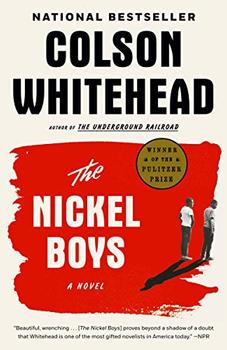Summary | Excerpt | Reading Guide | Reviews | Beyond the Book | Read-Alikes | Genres & Themes | Author Bio

This article relates to The Nickel Boys
 Colson Whitehead's The Nickel Boys sketches a horrific portrait of a brutal reformatory school, the Nickel Academy, where staff members routinely torture and terrorize the institution's teenage students. The events of the story are unsettling, and even more so given that Nickel is a fictionalized version of Florida's first juvenile detention center: the Arthur G. Dozier School for Boys.
Colson Whitehead's The Nickel Boys sketches a horrific portrait of a brutal reformatory school, the Nickel Academy, where staff members routinely torture and terrorize the institution's teenage students. The events of the story are unsettling, and even more so given that Nickel is a fictionalized version of Florida's first juvenile detention center: the Arthur G. Dozier School for Boys.
Opened in 1900 in the panhandle town of Marianna, the detention center was first run by governor-appointed commissioners, and later directly by the governor and cabinet of Florida. According to Smithsonian Magazine, Florida state statutes mandated that the center be "not simply a place of correction, but a reform school, where the young offender of the law, separated from vicious associates, may receive careful physical, intellectual and moral training."
In practice, the Dozier School for Boys was anything but humane or reform-oriented. Within the past decade about 300 men have come forth and testified that faculty and staff members regularly administered torture on campus, in a cloistered building the center's students called the White House. Calling themselves "the White House Boys," these men have talked openly to news outlets across the country about the horrors they endured during their stay at the state-operated institution: underfunded and unsanitary facilities, untrained and violent staff members and overcrowded lodging.
In 2008, the White House Boys banded together with other former students to explore and expose the school's terrible conditions. According to their findings, corporal punishment occurred frequently, from staff members paddling boys to administering horrific beatings, and dozens of unmarked burial sites were scattered around Dozier's campus. Confronted with mounting public outcry, governor Charlie Christ ordered a state investigation into the White House Boys' claims in 2008.
Far from being thorough, however, the investigation into the unmarked gravesites relied exclusively on incomplete school records. Authorities found only 31 unmarked graves, which they insisted could be attributed to deaths from natural causes, and they ignored the White House Boys' allegations of abuse. Dismissing the findings as a sham, the men called for a new investigation, and the federal Department of Justice responded in 2011, conducting an independent inquiry.
The national authorities confirmed the claims of the White House Boys. The Department of Justice found that excessive force and insufficient funding plagued the school from its start, and continued into the present day. At last, faced with indisputable evidence of wrongdoing, the Dozier School for Boys closed in 2011.
A 2016 excavation conducted by forensic anthropologists and archaeologists has further vindicated the White House Boys (see Beyond the Book for The Reformatory). The team dug up not just the school's cemetery but also other sites across campus, such as the nearby woods. They found 55 burial sites, 13 in the school cemetery and 42 unmarked graves across campus.
Race played a significant role in the abuse, which was segregated until 1966. The excavation team at the burial sites found that three times as many black students died at Dozier than white students, and many of the murdered black boys had been incarcerated for minor charges like running away. Such horrific facts make the ending of The Nickel Boys all too realistic and painful.
Juvenile detention centers nationwide continue to be underfunded and overcrowded. Over the past two decades, federal funding for these institutions has plummeted, dropping from $547 million in 2002 to $251 million in 2015. A recent report by the Justice Policy Institute has found that juvenile detention centers may even be more harmful than helpful. The report found that there's no evidence that detaining youth in these institutions makes them less likely to reoffend, but its findings did suggest that detainment puts youth at greater risk for substance abuse, delinquency and violence. Teens can still be incarcerated for minor offenses like shoplifting, and once in these centers, they often become more aggressive and jaded.
Until the government invests more resources into these facilities and reforms the way they operate, it seems likely that the cycle of neglect, abuse and ineffective management will continue, resulting in further adversity for the young people detained there.
Filed under Society and Politics
![]() This "beyond the book article" relates to The Nickel Boys. It originally ran in July 2019 and has been updated for the
June 2020 paperback edition.
Go to magazine.
This "beyond the book article" relates to The Nickel Boys. It originally ran in July 2019 and has been updated for the
June 2020 paperback edition.
Go to magazine.
Your guide toexceptional books
BookBrowse seeks out and recommends the best in contemporary fiction and nonfiction—books that not only engage and entertain but also deepen our understanding of ourselves and the world around us.